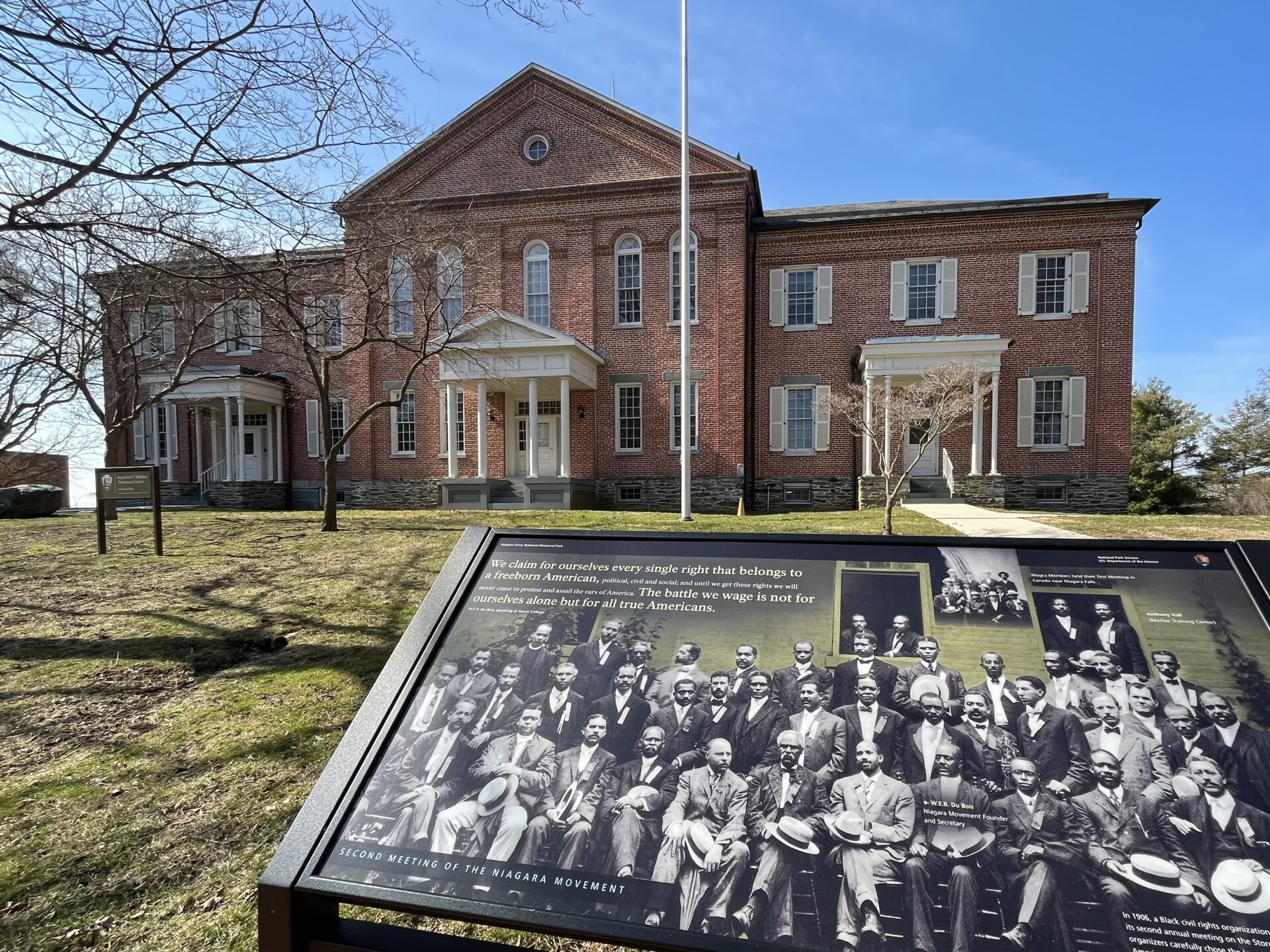The historical importance of Harpers Ferry becomes clear on any drive across the town’s cobblestone roads. Museums, Victorian homes and storefronts shelved with old-time goods line each of the town’s winding streets.
Many West Virginians know Harpers Ferry as a hub of Civil War history, serving as the site of an 1859 abolitionist uprising led by John Brown and Shields Green.
But fewer people know that the town also played a seminal role in the 20th century civil rights movement. Now, a new documentary, which can be viewed for free on PBS Passport, aims to raise awareness of an often overlooked piece of American history with direct ties to West Virginia.
Origins Of A Black-led Civil Rights Group
In 1905, a group of Black civil rights leaders came together to form the Niagara Movement. Historians describe the group as a precursor to the National Association for the Advancement of Colored People (NAACP).
The group was founded by Black Americans in Canada, just outside of Niagara Falls. It aimed to address racial injustice in the aftermath of the Civil War, advocating against things like sharecropping, racial segregation and pervasive anti-Black violence across the United States.
For its time, the Niagara Movement was viewed as radical. It was run exclusively by Black civil rights leaders like W.E.B. DuBois and William Monroe Trotter.
Credit: Jack Walker/West Virginia Public Broadcasting
Plus, it offered a countercurrent to accommodationist perspectives on racial justice, which encouraged Black Americans to temporarily accept segregation, better their communities and one day push for increased civil rights.
This revolutionary mindset is what drew the group to Harpers Ferry in just its second year. Beyond its ties to abolitionist uprising, the West Virginia town was home to Storer College, a historic Black college open to discussions on racial liberation.
“They felt safe to come to a Black college,” said Scot Faulkner, who co-founded a local organization called the Friends of Harpers Ferry National Park. Faulkner’s group serves as a liaison between current town residents and the national historic park.
“They saw a link between themselves as a force, basically an aggressive force on behalf of African American rights,” he said. “They felt common ground and common philosophy with John Brown and the more radical abolitionists going back into the 1850s.”
While visiting parts of the town, Faulkner said the group’s leaders even took off their shoes because they felt that they were walking on “sacred ground.”
Faulkner said that Harpers Ferry provided a stepping stone for early civil rights leaders addressing racial injustice at the turn of the twentieth century. But not everyone who visits the town is aware of this history, which can be overshadowed by the town’s Civil War ties.
Credit: Jack Walker/West Virginia Public Broadcasting
Shining A Light On The Niagara Movement
A new documentary titled “The Niagara Movement: the Early Battle for Civil Rights” released through Buffalo Toronto Public Media earlier this month tells the story of the Niagara Movement, from how it was founded to how it gave way to the NAACP.
Raymond Smock is a historian who serves as director emeritus of Shepherd University’s Robert C. Byrd Center for Congressional History and Education. He also previously served as historian of the U.S. House of Representatives.
Smock contributed to the documentary, and hosted a screening of it on Shepherd’s campus earlier this month.
While the film doesn’t center on Harpers Ferry alone, Smock said it shows that the West Virginia town facilitated early civil rights discussions.
“This was an amazing meeting at a very historic spot where John Brown’s raid, some say, started the Civil War,” he said. “There was a great interest in holding this meeting.”
Still, Smock said that the Niagara Movement does not always get sufficient attention in contemporary historical discussions.
Credit: Jack Walker/West Virginia Public Broadcasting
“In the immediate vicinity, if you’re in Jefferson County, West Virginia, the Harpers Ferry meeting of the Niagara Movement is pretty well-known history,” Smock said. “But it’s not well known in most other parts of the state or the nation.”
Both Faulkner and Smock said that they hope the documentary helps people learn more about the Niagara Movement and civil rights history.
Much of this history can be discovered right in West Virginia, at historic Harpers Ferry sites like the Storer College campus and the Storer College Museum. The multi-level museum has exhibits dedicated to Black history, from the Niagara Movement and beyond.
For Faulkner, the ability to discover these pieces of American history on a simple walk through town is what makes Harpers Ferry great.
Harpers Ferry “was the philosophical and emotional link between the Niagara Movement in the 20th century and the abolitionist movement, especially the more forceful aspects of the abolitionist movement, of the 19th century,” he said.
“It was a really important melding of these two threads in American history, and certainly of the African American rights movement,” Faulkner said.
